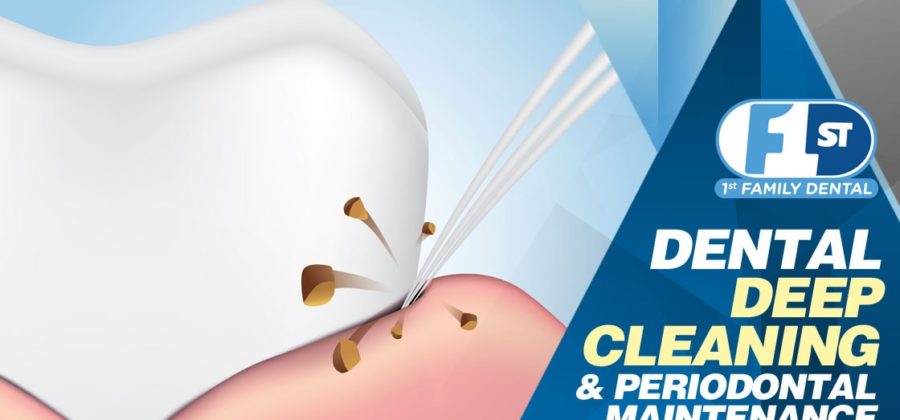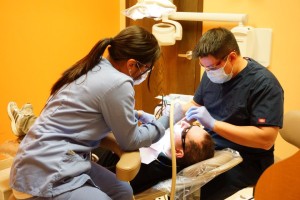In need of a dental deep cleaning? If you have been diagnosed with gum disease, know that you are not alone. According to the CDC, more than 64 million adults in the U.S. are living with, or have had gum disease. Gum disease is treatable, curable and preventable. Learn more about the different types of gum disease, as well as symptoms and recommendations for prevention.
Diagnosing Gum Disease
Gum disease is diagnosed when probing reveals one or more periodontal pockets, or areas where the gum has pulled away from the tooth, 4 millimeters deep or greater. In some cases, only one quadrant, or quarter of the mouth, may be affected. In other cases, the affected areas may span throughout the entire mouth.
Gum disease can be caused by a lack of consistent and proper brushing and flossing, long periods of time between regular professional dental cleanings, and other known conditions such as diabetes. Women who are pregnant may also experience temporary bouts of inflammation and gum disease which should be monitored by a dentist.
In most cases, gum disease can be treated at any 1st Family Dental location using a treatment called scaling and root planing, which is also known as a deep cleaning. However, a referral to a periodontal specialist may be required to treat more advanced cases.
Scaling & Root Planing (Deep Cleaning) versus Regular Cleaning
Scaling and Root Planing, also known as a dental deep cleaning, is very different from a regular cleaning. A regular cleaning focuses on the surfaces of the teeth and between teeth above the gum line. During a regular cleaning, the teeth are also polished.
A dental deep cleaning, or scaling and root planing, is needed in order to remove bacteria, calculus (tartar), and debris that has collected under the gum line.
The presence of calculus under the gumline creates a safe haven for bacteria to collect, and cannot be removed by brushing, flossing or with a regular cleaning. The presence of this bacteria causes an immune response from the body. This immune response results in inflammation, to fight the bacterial infection. If left untreated, the infection and inflammation will continue and progress further under the gum line, resulting in loose teeth and bone loss, and ultimately, the loss of one or more teeth.
| Scaling & Root Planing (Deep Cleaning) | Regular Dental Cleaning | |
| Local Anesthetic (numbing) Required | X | |
| Calculus, plaque, and debris removed at and above the gum line | X | |
| Calculus, plaque, bacteria and debris removed below the gum line | X | |
| Antibiotics prescribed for healing | X | |
| Root of tooth smoothed and shaped to remove bacteria | X |
Scaling & Root Planing Procedure
Scaling and Root Planing can be performed on one or two quadrants (quarter) of the mouth at a time, or the entire mouth can be treated in one visit, depending upon the diagnosis and recommendation of your dentist.
During the visit, your dentist or hygienist will typically numb area to be treated. Next, your dental professional will carefully work under the gum line to clean away the calculus and debris. After this, your dentist will carefully shape, or plane, the root of the tooth, to remove places where bacteria can collect in the future. Your dentist or hygienist may also provide recommendations and demonstrations.
Recovery from a scaling and root planing is typically simple. Your dentist will usually prescribe an antibiotic regimen for you to follow, and may recommend an over-the-counter pain reliever if you are experiencing any discomfort. or tenderness in the treatment area. Your dentist will provide you with after care instructions, and confirm with you when you should be able to resume a regular oral hygiene routine, including regular brushing and flossing.
Your dentist may recommend you return for a checkup visit to make sure everything is healing well.
Gum disease can be treated and often cured, but may require regular ‘maintenance’ visits, usually every 3 months in the beginning, to monitor the status of your teeth, gums and bone to make sure your gums have healed and the bacteria has not returned. Some individuals who may be predisposed to having gum disease may need to return for regular periodontal maintenance cleanings, and others may be able to return to a regular hygiene routine and 6-month dental checkup visits.




9 Comments
Leave your reply.